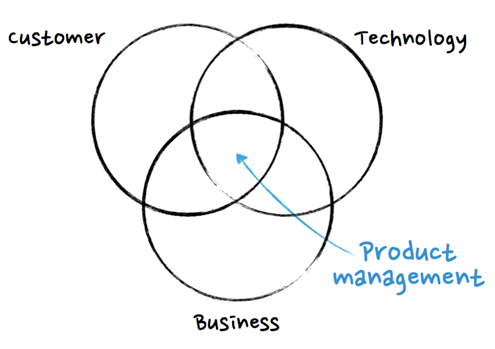Today, business is all about bringing products and solutions to customers that are both innovative and convenient. Be it startups or medium-sized enterprises, or large corporations, every company is engaged in the rat race of developing pioneering products that can address the pain points and problems of their target customers. Have you ever thought, how do brands consistently create and launch an array of products, one after the other?
The secret sauce is Product Management.
Product Management is a widespread practice that has taken over the industry by storm. It is now a mainstream role in both small startups and big corporations. Product Management is unique in that while it does not fit any of the traditional characters associated with developing product strategy, it encompasses a variety of roles and functions such as business strategy, product design, engineering, and marketing.
Read: Product management jobs and their career prospects.
What is Product Management?
Product Management is an interdisciplinary practice that involves cross-functional teams to strategize on product plan, design, and marketing to develop and launch innovative products in the market continually. In simple words, Product Management is a technique of organizing product planning, development, marketing, and other tasks associated with product development.

In essence, Product Management r revolves around a new product development strategy with one end goal in mind – the new product should be an upgrade over existing products or include at least some unique features that create value for the customer.
Explore our Popular Business Management Courses
Product Management evolved out of the core responsibilities and functions that were traditionally handled by Developers and Engineers, two of the most pivotal ones being identifying user problems and making crucial product decisions. The scope of Product Management is a much broader and comprehensive way beyond the sole grip of the development team.
Product Managers establish the product vision, define the product strategy, and build a roadmap to ensure that the product vision is perfectly aligned with the company goals and customer requirements. A Product Manager must possess business acumen along with a deep understanding of UX design and technology. The primary aim of Product Managers is to find the answer to one fundamental question:
How to bring the best product to the target market and grow the company’s business?
This is where the Product Management Strategy comes into play.
How to create a solid Product Management Strategy for your business?
1. Know your prospects
Why do companies develop and release products in the market?
To serve customers. Naturally, when developing a product, the first place to start is your customers. Talk to your customers and gather as much data as you can from them. This data will include their demographic details like age, job title, location, preferences, needs, and pain points. You can gather customer data through survey forms, one-on-one feedback, and social media chatter (comments, mentions, etc.).
Once you have the relevant data at your disposal, you will have a better idea of what kind of product(s) you need to develop to cater to your target audience. Furthermore, you can combine customer data with market data to build actionable product strategies internally during brainstorming sessions with executives from different teams. The more comprehensive your data, the better you will be able to evaluate both market opportunities and risks.
Top Essential Management Skills to Learn
2. Understand the product
The next step is to understand and determine the goals that you wish to accomplish through your product strategy. It could be anything, such as increasing company sales, expanding to new markets or countries, and so on.
You must remember that each product is different, and hence, the same product strategy cannot be applied for different products. When brainstorming on a new product development strategy, you have to bring in all the related teams to design a detailed product roadmap.
To get a good sense of the product, you must conduct in-depth market research, try to find similar products, and see what product trends your competitors are following. This will make it easier for you to find new opportunities and develop a robust product vision.
3. Define the product goals
Once you’ve created a vision for your product, the next step is to materialize this vision into a set of actionable objectives or goals for your product. Keep in mind that your product goals should align with the product strategy.
Some of the core product goals include attracting new buyer personas, increasing the customer lifetime value (CLV) of existing customers, and enhance customer satisfaction. You could treat these individual product goals as the key performance indicators (KPIs) for your product and measure the product’s success rate.
Make a list of all your product goals, and if you can, try to organize them according to their priority. This approach will outline specific strategies for your product, like design, functionalities, and pricing.
Read: Prerequisites for Product Management: Eligibility, Creativity Level, Emotional Quotient
4. Evaluate the management tools and frameworks
Before you embark on designing a product management strategy, you must take some time to evaluate and assess the existing management tools and frameworks. This is crucial as it lets you understand if the current management tools are enough for the new product or do you need to include new tools. Using the right tools and software frameworks will automate a lot of redundant tasks and facilitate faster testing and implementation.
Another vital requirement for building a robust product management strategy is to ensure that all the teams are perfectly coordinated. There must be regular communication between all departments engaged in product development. This encourages transparency within the organization.
Our Top Management Articles
5. Create a product roadmap
This step is all about tying the elements mentioned above together. Here, you will create a strategy that can combine your product vision and product goals with the right management tools and frameworks. You have to outline specific themes and plans in your roadmap and pit them against individual product goals. The weighted-scoring model is excellent for including the initiatives you wish to include in the product roadmap.
Here, you must align two crucial elements – the product roadmap and the internal schedule. The product roadmap is better understood as a calendar that outlines all the relevant details like actions, initiatives, short-term and long-term goals, and dates (for instance, product release). On the other hand, the internal schedule is more like a marker for the calendar.
It assigns job roles and tasks, defines workflows, and acts as a communication system for all team members. When the product roadmap is well-integrated with the internal schedule, it minimizes the chances of errors, promotes communication, and on-time delivery of the product.
6. Monitor all workflows
After you set the product roadmap in motion, it is essential to continually monitor and evaluate the performance of your objectives, goals, and KPIs. You may have clearly defined goals, a strategically sound roadmap, and a smooth schedule, but none of these will amount to real success if they aren’t adequately tracked and measured.
More often than not, business is tricky. Things don’t always pan out exactly as planned. Numerous internal and external factors come to play as you progress in the product roadmap, such as priorities, market trends, constraints in company resources and budget, and unpredictable customer and competitor behavior, to name a few. Thus, as you move ahead, you must check on how the planned processes and strategies are performing, and if they can cope with the evolving market factors.
upGrad’s Exclusive Product Management Webinar for you –
How to craft GTM Strategy for a Product?
The road to product development is never smooth – you need to make constant readjustments as you go.
7. Fortify all fronts
Product Management is an amalgamation of several business components, including design, technology, product positioning, marketing, and customer analysis. Naturally, your Product Management strategy’s success is heavily dependent on the smooth functioning of each of these business areas.
So, your job as a Product Manager is to strengthen all facets of your company. Look into the needs of individual teams and equip them with the right tools and resources. Conduct regular workshops that allow the company staff to upskill and stay updated with the latest tech, market, and consumer trends.
Also Read: Product Management vs Product Marketing: Which One Should You Choose
Study Product Management Courses online from the World’s top Universities. Earn Masters, Executive PGP, or Advanced Certificate Programs to fast-track your career.
Wrapping up
The bottom line is that you have to build a well-oiled machine, which can only happen when you pay attention to things at the grassroots level. It will not only eliminate internal chaos but also promote the overall growth of the company.
Complicated as it may seem, this is how one should approach creating a Product Management strategy. When designed in a strategic and stepwise manner, your Product Management strategy will bring the company closer to short-term and long-term goals.
However, merely creating goals and visions won’t do. You must take the time to regularly check whether or not you are moving along the desired path. If not, take a step back, re-evaluate and re-adjust your objectives and plans, and then move forward!
In a way, a product manager directs the company on a competitive path in the future. If you’re eager to learn about Product Management and interested to become a great product manager, you need to demonstrate qualities of leadership, check out the Post Graduate Certificate in Product Management for it is you who’ll guide your team towards the path of success














































![Project Manager Salary in India in 2024 [For Freshers & Experienced]](/__khugblog-next/image/?url=https%3A%2F%2Fd14b9ctw0m6fid.cloudfront.net%2Fugblog%2Fwp-content%2Fuploads%2F2020%2F07%2F684.png&w=3840&q=75)



